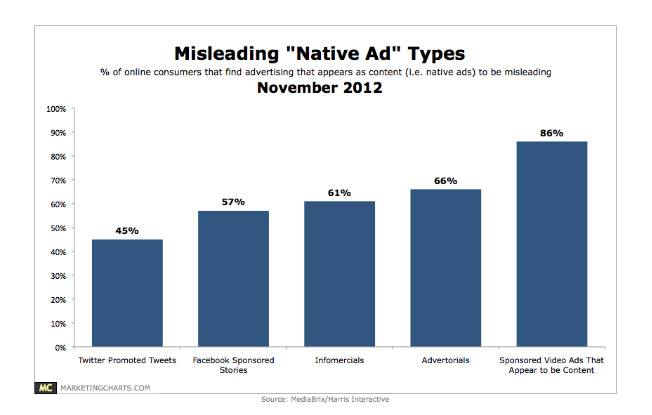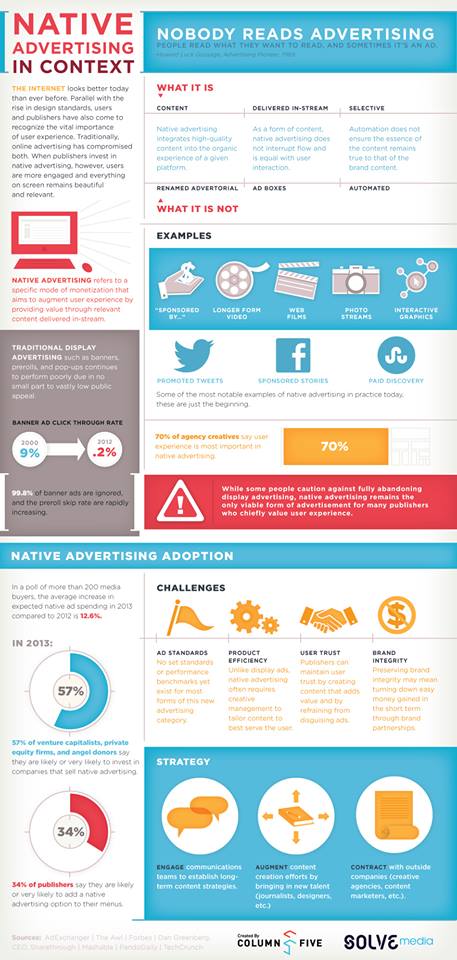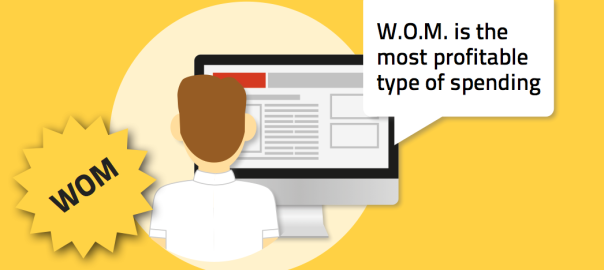Newspapers have been using this method for years, dressing up advertising to make it look like editorial content and fooling people by sticking it in with the rest of credible content to camouflage its ingenuity.
The key difference between native marketing and content marketing is that native marketing looks for instant gratification while content marketing seeks to build long-term trust in their audience. Native marketing aims to sell a product or service other marketing strategies usually want to inform and win people over.
Most of the time, the tone of native marketing has a pushy or sales like tone. Otherwise, it can be superficially friendly to try to mimic the tone of content marketing that has the user in mind rather than the product and/or service.
According to an infographic by Solve Media and Column Five, Native Marketing can be defined as “a specific mode of monetization that aims to augment user experience by providing value through relevant content delivered in-stream”.
According to this infographic, “the average increase in expected native ad spending in 2013 compared to 2012 is 12.6 percent”. There is a huge increase in this kind of marketing and with audiences able to sniff out a sales pitch much quicker than in years past, it is important to disguise this kind of marketing into someone else’s site, advertisement, content that already has a following that listens to them.
Gone are the days of the banner ad and pop up ad that disrupts users while online and today marketers are focusing much more on using Native Marketing to get the core online audience to pay attention. Many marketers are opting to pay for posts or sponsor online content on social media channels such as Tumblr, Twitter, Facebook and more. These posts show up along with the unsponsored posts and therefore get a lot of traffic from people clicking on them out of curiosity.
While almost always native ads blend in with the more credible content, tricking the user to read more, the truth is that there is always a disconnect between what the user is reading and the ad that is being presented. The ad is usually gushing with positivity and bragging about how great the product/service is. The reader has to look closely to realize the ad is actually being sponosored.
CEO and founder of eMarketer, Geoff Ramsey explains what a native ad done right looks like.
Now that native ads are on the scene and with the pathetically low click through rate of banner and pop up ads it’s obvious why most brands are adopting this souped-up kind of marketing. With higher click-through rates and lower costs to publish them, along with getting the credibility and audience attention from someone else’s site it’s no wonder brands are loving this kind of advertising.
How about how users react to these ads? According to a November 2012 MediaBrix survey, many customers feel betrayed by the ads, depending on the presentation. Promoted tweets via Twitter score the lowest, but a major 86% of users feel misled by video ads that appear to be actual content:
Brands need to find the balance between helping the user and just publishing empty hype. Always consider the customer and remember how transparent the internet makes today’s marketing practices. Take note from good and bad native marketing campaigns and try to follow in the footsteps of the big brands that do it right. Happy native marketing!





1 comment